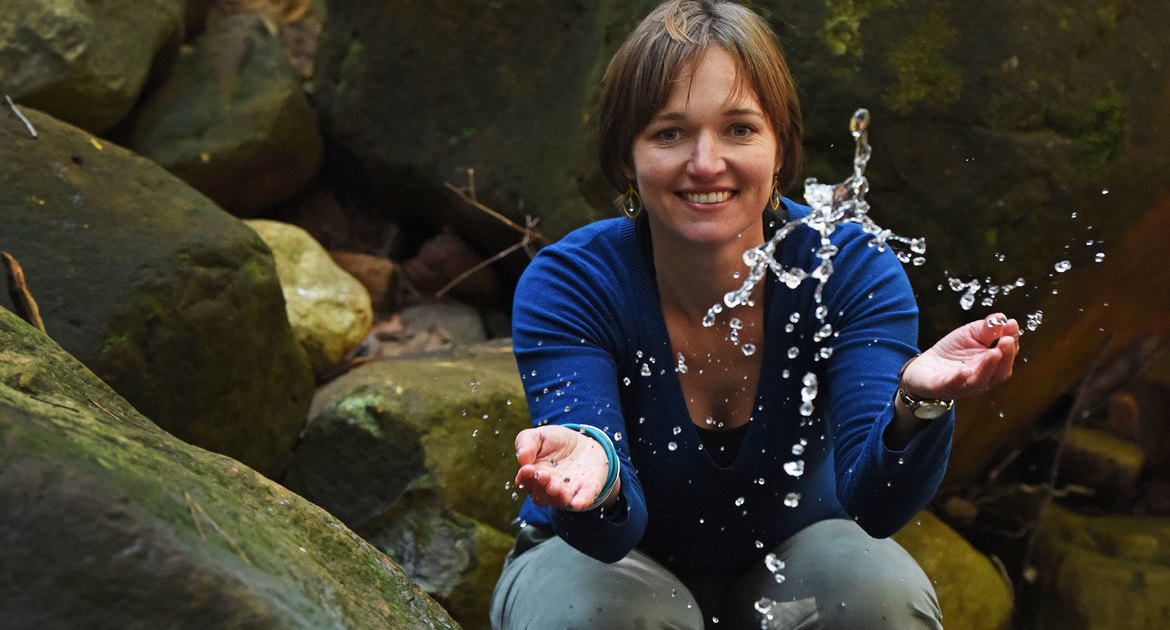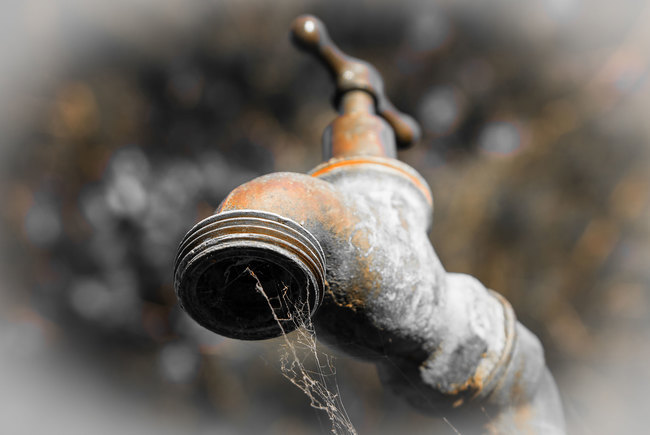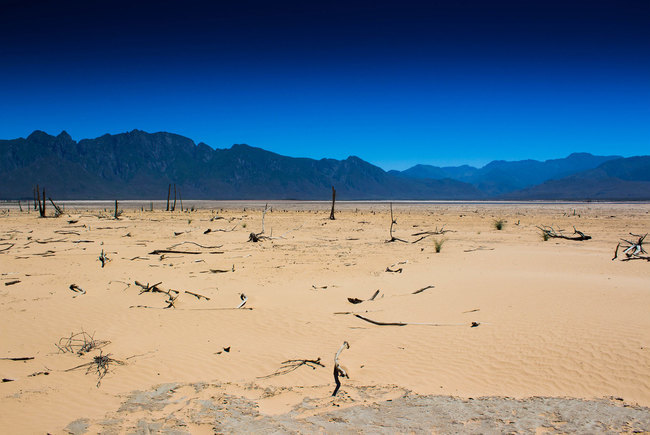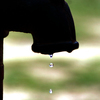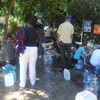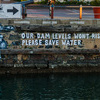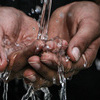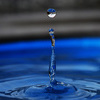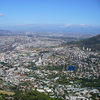Use what you have before you take from others
16 March 2020 | Story Neil Armitage. Photo Wikimedia commons. Read time 8 min.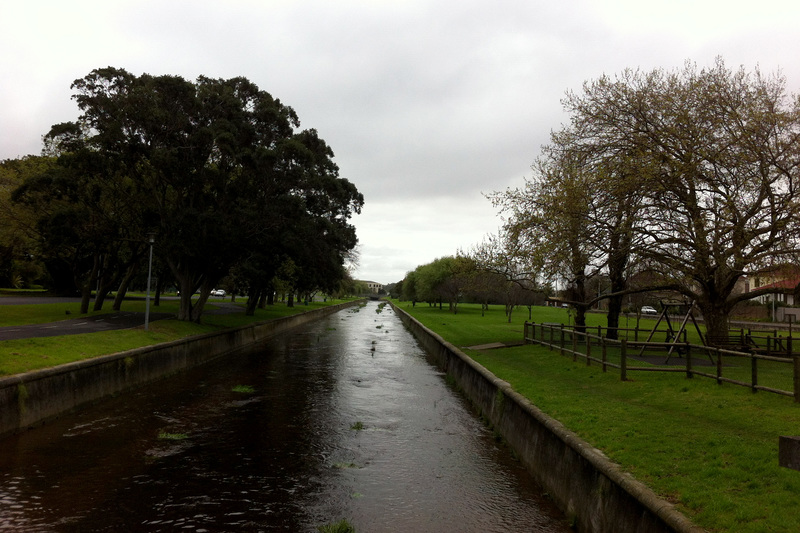
As South Africa celebrates National Water Week from 16 to 22 March, Professor Neil Armitage, from the University of Cape Town’s (UCT) Department of Civil Engineering and a member of UCT’s Future Water Institute, takes a look at the City of Cape Town’s (CoCT) current water supply and what alternatives might be viable future water sources.
The Day Zero threat that emerged as a result of the 2015–2018 drought in the Western Cape brought home to Capetonians our reliance on a guaranteed supply of potable (drinkable) water. The draconian restrictions that were put in place to prevent Day Zero badly hurt the local economy, with particularly devastating impacts on agriculture and tourism and their associated labour forces. So, how can we avoid Day Zero in the future?
Where does our water come from?
The CoCT report for 2 March 2020 provides telling information on where Cape Town’s potable water supply comes from. For the week of 24 February to 1 March, the total water usage was 771 ML/d (megalitres per day, or a million litres per day), distributed as follows:
- major dams: 736 ML/d
- minor dams: 17 ML/d
- desalination plants: 11 ML/d
- ground water and springs: 7 ML/d.
The major dams all lie outside the CoCT municipal area – in the mountainous region to the east – while the minor dams all lie inside the CoCT. The split has a historical explanation: the minor dams are mostly old and were constructed when the CoCT was much smaller than it is today, while the major dams are much younger and are situated in the high-rainfall, more ‘pristine’ catchments outside the city.
“Some 95% of the CoCT water supply, currently comes from outside its boundaries.”
The locations of the “ground water and springs” and “desalination plants” are not given in the report, but these are mainly (possibly entirely) from within the CoCT boundaries. In other words, 736 of the 771 ML/d, or some 95% of the CoCT water supply, currently comes from outside its boundaries.
Why is this a problem?
It certainly seems to make sense for the CoCT to source water in bulk from places where rainfall is generally higher, storage more available and the water quality much better (owing to the fact that the major dams – the so-called Big Six – are all situated within nature reserves). Water sourced from these dams is simply cheaper than is the case with alternatives within the CoCT boundaries.
The problem arises because the CoCT does not, and should not, have the first option on these water resources. Theewaterskloof Dam – with 53% of Cape Town’s total storage capacity – was originally built to supply irrigation water down the Riviersonderend Valley. The Wemmershoek, Voëlvlei and Berg River dams all abstract water out of the Berg River system – another rich agricultural area. All six dams deny water for their local environments, with potentially devastating impacts.
What are the alternatives?
It is tempting to see desalination as the answer to Cape Town’s water problems since effectively unlimited quantities of water are available from the ocean. The problem with desalination is that it is energy hungry and generates huge flows of brine that must be safely disposed of. It also tends to be very expensive – although unit costs are gradually falling. Desalination essentially trades a water problem for an energy problem with serious issues regarding its generation and the potential for increased global warming. More load-shedding anyone?
“Desalination essentially trades a water problem for an energy problem.”
Groundwater – and the associated springs – currently only accounts for less than 1% of the CoCT supply, however, there is much more to this water source than is obvious from the figures provided. It is well known that many properties in the ‘leafy suburbs’ have private well-points or boreholes. This was so before the 2015–2018 drought; during the drought, drilling companies went into overdrive for those wealthy enough to afford the hefty price tag. Some individuals boasted about getting ‘off the grid’, however, this raises serious questions about what is happening to groundwater resources – not to mention that groundwater can be contaminated and can thus be unfit for human consumption.
What about rainwater?
A substantial quantity of water is not being accounted for in the CoCT figures. Ultimately, the source of all groundwater is rainwater. The CoCT receives an average of around 1 200 GL (gigalitres) from the sky each year. Even in a dry year, this works out at an average of at least 2 000 ML/d, and it can be more than double this in a wet year. This is considerably more than the average CoCT demand of around 900 ML/d before the drought, not to mention the less than 600 ML/d used last year.
“A substantial quantity of water is not being accounted for in the CoCT figures.”
So, what happens to our rainwater? Some goes to recharging groundwater. A little is captured in the many rainwater tanks that were purchased during the drought. Much is flushed to the sea – taking along faeces, nutrients, heavy metals, trash – and much more besides – because of our archaic drainage systems where runoff goes straight from the roads to the rivers. Not only is this doing enormous damage to our environment, it is a waste of a resource.
Historically, many of Cape Town’s streams drained into the dunes on the Cape Flats before seeping into the ground. Relentless development resulting in the ‘hardening’ of the catchment through the construction of houses and roads has seen the proportion of rainwater going to groundwater dropping dramatically.
A better way
The abuse of rainwater needs to be reversed. We need Cape Town to be a ‘sponge city’ – where rainwater seeps into the ground wherever possible. We also need for better use to be made of this rainwater. A few rainwater tanks at upmarket residential properties is inadequate. Mostly they are too small; they are quickly filled and emptied. New educational, commercial and industrial buildings should be forced to provide cisterns in their basements large enough to capture a substantial quantity of the rain that falls on their roofs.
UCT – one of the CoCT’s biggest water users – receives an average of around 2 700 ML (megalitres) of rainfall per year on upper campus alone, which is enough to supply the CoCT for around three to four days. What does the university do with this rainfall? Mainly it allows it to flow down to the Liesbeek River and out to sea.
What if some of this was captured, stored and then used to supply some of the water needs of the campus – specifically those that do not require potable water, such as flushing toilets or watering the grounds? This could be achieved by, for example, building a large reservoir underneath the sports fields. It would be expensive, but it would pay for itself over the long run.
What goes for UCT also goes for Cape Town as a whole. Rather than taking water away from regions beyond the city borders, we should be more efficiently using the resources that are readily available to us.
 This work is licensed under a Creative Commons Attribution-NoDerivatives 4.0 International License.
This work is licensed under a Creative Commons Attribution-NoDerivatives 4.0 International License.
Please view the republishing articles page for more information.
Cape Town water crisis
At UCT our researchers have been analysing the causes of the current drought, monitoring water usage on campus and in the city, and looking for ways to save water while there is still time. As part of UCT’s water-saving campaign, all members of the campus community are encouraged to reduce their water use by half, which will help Cape Town to meet its water-use goals and ensure a water-sustainable university in the future.












